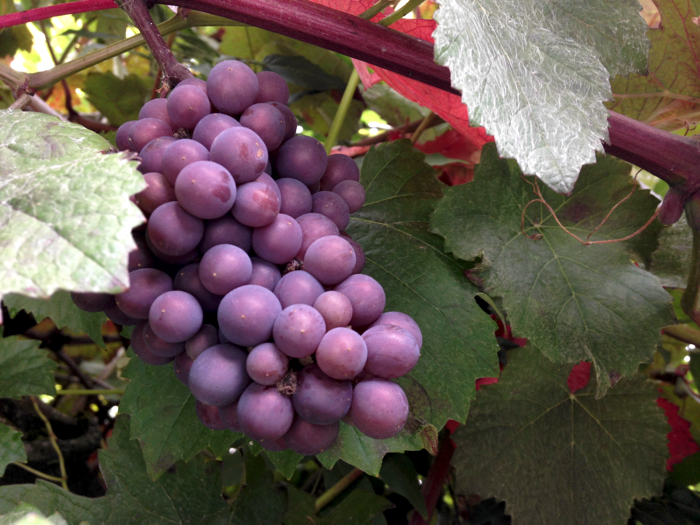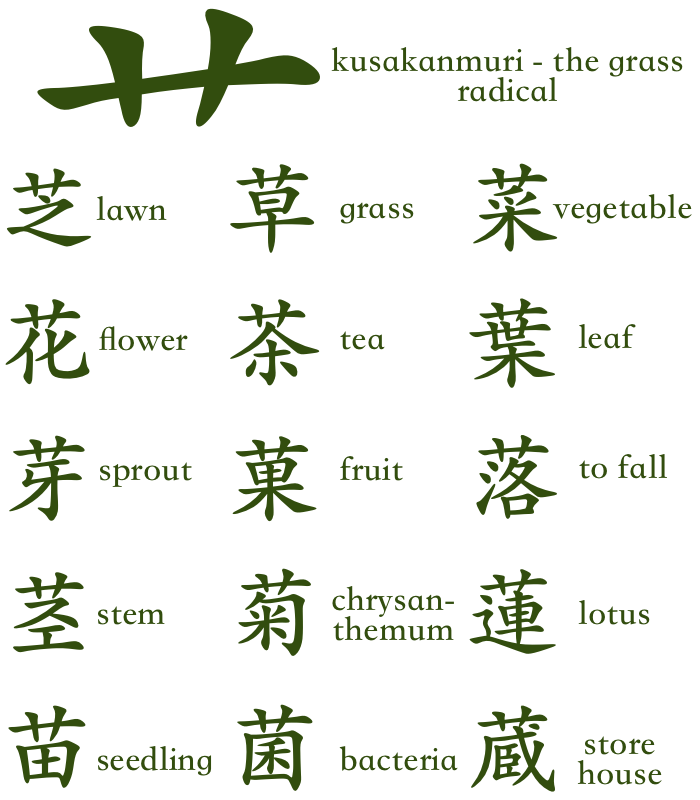Your cart is currently empty!
Grapes and kusakanmuri

The grapes are looking more delicious every day. We are hoping for warm, sunny weather through September so that they will ripen this year. As the climate warms, this Skagit Valley may become the new Napa: Napa on the Sound: Climate change turning Puget Sound area into prime terrain to grow valuable vines
The Japanese word for grape is budou. Written with Chinese characters, it is written 葡萄. 葡-bu means grape, and so does 萄-dou. In essence, grape-grape. If you look closely, at the top of both of these characters is a horizontal line with two short, vertical strokes. You can see this more clearly in the chart below. This three stroke radical is known as the kusakanmuri or grass crown. When you see a Chinese character with these three strokes on the top, chances are, the character means something related to plants.

And what about the characters that mean to fall and store house? What do they have to do with grass or plants? In the case of the to fall character, the portion below the grass crown means water dripping. Combined with the grass radical, it meant leaves falling off of trees and plants, and eventually took on the meaning of to fall. Look at the other parts of that character. See the part that means water? You’ll find the answer here. And a simplified history of the character is below:

The store house character illustrates a store house with a grass roof. The part of the character under the grass radical means to cover something. In ancient times, people stored things under grass thatch roofs. Over time, the character came to mean a place where you store valuables.
This should give you an idea that Chinese characters, called kanji in Japanese, are not a bunch of random squiggles. There is a framework of radicals supplying an base reference which is refined with components adding the meaning and the sound.
Leave a Reply
You must be logged in to post a comment.